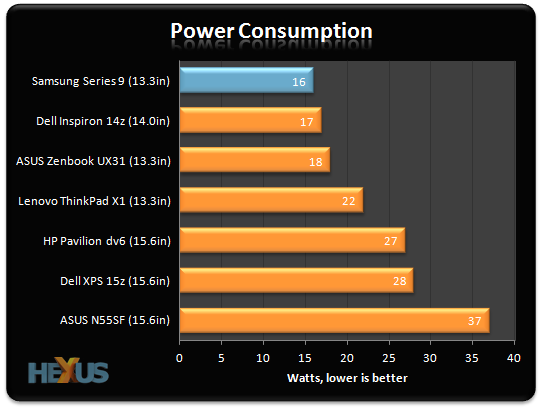Performance - Part Two
GPU Performance

If it's 3D horse power you're after, you won't find it here. The Samsung Series 9 makes use of Intel's familiar HD 3000 integrated graphics processor (IGP) and, as far as graphics are concerned, can't compete against laptops that offer discrete GPUs.
Gaming potential is severely limited - we managed just 19.7 frames per second in Just Cause 2 at a low 1,280x720 resolution - but the IGP is more than sufficient for everyday tasks such as playing back HD video.
System Performance

We've established that neither the CPU nor GPU are the quickest around the block, but the tables have turned in PCMark 7. The reason for this is the Series 9's 128GB SanDisk U100 SSD. The drive scored read and write speeds of 497MB/s and 304MB/s, respectively, in the ATTO disk benchmark, and it allows the system to feel fast and ultra-responsive.
Putting the performance into a real-world perspective, the Series 9 was able to boot into Windows 7 in just 14 seconds and takes only three seconds to wake from sleep. It's nippy alright.
Power Consumption and Battery Life

Samsung hasn't opted for the quickest CPU available, but the advantage to the component selection is that the Series 9 is able to keep power consumption down to a minimum. While playing back a high-def movie clip with wireless enabled and screen brightness set to full, the laptop consumes just 16 Watts.

As expected, low power consumption allows Samsung to get a good runtime from the Series 9's modest 40Whr battery.
Despite offering the second-lowest battery capacity in our line up (Lenovo's ThinkPad Edge is the smallest at 38.4Whr), the Series 9 managed to loop our high-def video for a solid four hours and twenty minutes.









